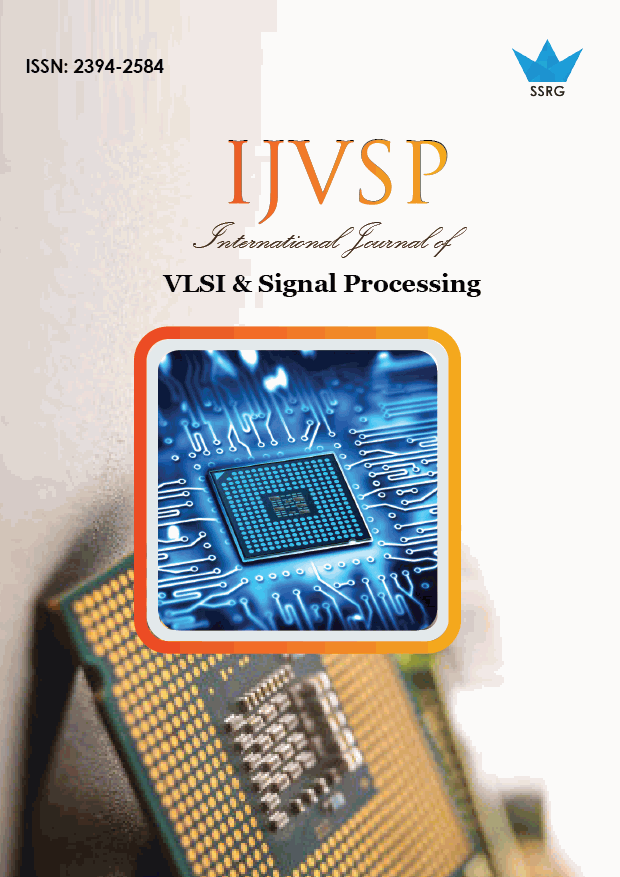ATM Security Enhancement using VHDL

| International Journal of VLSI & Signal Processing |
| © 2016 by SSRG - IJVSP Journal |
| Volume 3 Issue 1 |
| Year of Publication : 2016 |
| Authors : Dr.K.L.Suseenthiran, T.Saravanan and K.Selvakumar |
How to Cite?
Dr.K.L.Suseenthiran, T.Saravanan and K.Selvakumar, "ATM Security Enhancement using VHDL," SSRG International Journal of VLSI & Signal Processing, vol. 3, no. 1, pp. 12-15, 2016. Crossref, https://doi.org/10.14445/23942584/IJVSP-V3I1P104
Abstract:
In recent years most of the financial organizations and public and private banks, societies are being computerized so for improves the services, efficiency, and accuracy and reduce service cost. Electronic Fund Transfer and Automated Teller Machines place on important role in day to day life. It provides 24-hour banking and a superior variety of services for the customer. NEFT is a facility provided to bank customers to enable them to transfer funds simply and securely on a oneto- one basis. It is done by the use of electronic messages.By this method customer uses a computer to transfer their money in anywhere in the world with the help of electronic pulses, which are passed through wires either to a magnetic disk or tape. An ATM card is the expense card supplied by a financial institution that allows a customer to access an automated teller machine (ATM) in order to perform transactions such as deposits, cash withdrawals, obtaining account information, etc. ATM handles customer’s money so for security system is an important part. The main role of this article to provide more security and integrity in order to implement VLSI-based programming, HDL (Hardware Description Language).The conventional coding languages such as C, C++ isinterchanged by VHDLthis coding technique cannot be easily hacked or changed.
Keywords:
Automated Teller Machine, Security system, HDL (Hardware Description Language), VHDL, FPGA (Field Programmable Gate Array).
References:
[1] Yingxu Wang and Yanan Zhang, “The Formal Design Model of an Automatic Teller Machine (ATM)” University of Calgary, Canada, International Journal of Software Science and Computational Intelligence, 2(1), 102-131, January-March 2010.
[2] Mike Bond, Omar Choudary, Steven J. Murdoch, Sergei Skorobogatov, and Ross Anderson, “Chip and Skim: cloning EMV cards with the pre-play attack”. Computer Laboratory, University of Cambridge, UK.
[3] Avenet Avenue, user’s guide, Xilinx® Spartan™-3 Development Kit.
[4] Stanley MAZOR and Patricia LINGSTRAAT, "A guide to VHDL (2nd Edition)", copyright 1993, Kluwer Achedamic Publishers, pp no: 1-1 to 7-16.
[5] http://www.fpga.com.cn/hdl/training/Vhdl_Golden_Refere nce_Guide.pdf
[6] http://communities.mentor.com/mgcx/servlet/JiveServlet/p reviewBody/2324-102-2-5693/HDL-Standards-UGCAST. rev1b.pdf.
[7] Peter J. Ashenden and Jim Lewis, "The Designer's Guide to VHDL (3rd Edition)" copyright 2008, Morgan KJaufmann Publication, pp no:207-225.
[8] Pong P. Chu "RTL Hardware Design Using VHDL, Coding For Efficiency, portability and Scalability", Willy Interscience a john wilay& sons, inc., Publication, pp no:23-160.
[9] Hardware Implementation of Watchdog Timer for Application in ATM Machine Using Verilog and FPGA IqbalurRahmanRokon, ToufiqRahman, Md. Murtoza Ali Quader, and MukitAlam,International Conference on Electronics, Biomedical Engineering and its Applications (ICEBEA'2012) Jan. 7-8, 2012 Dubai

 10.14445/23942584/IJVSP-V3I1P104
10.14445/23942584/IJVSP-V3I1P104